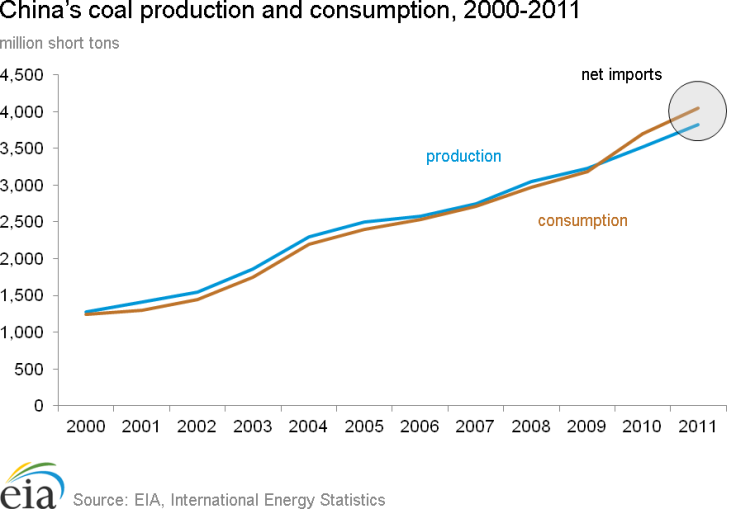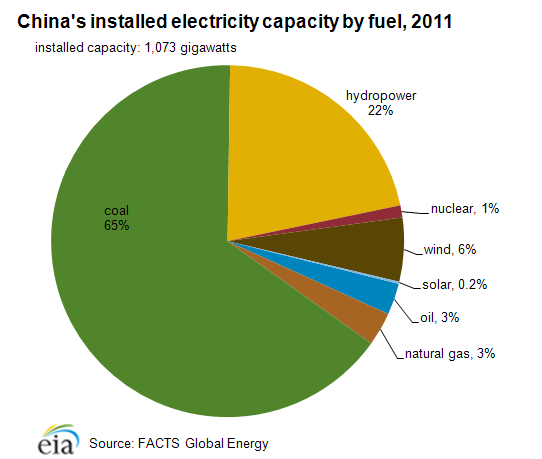Forget Renewable Energy; China Prefers To Burn Fuel For Consumption

One reason why China is one of three countries that account for more than 85 percent of global carbon emissions from coal-fired plants is its lack of renewable energy resources, according to data released by the U.S. Energy Information Administration (EIA).
In 2011 only 6.2 percent of China’s installed electricity capacity was generated by wind and solar while coal represented 65 percent of the country’s installed capacity, according to the most recent data from the EIA as of April 2013, via Climatesanity.wordpress.com.

One of the lowest amounts of installed electricity capacity in 2011 was solar energy, which accounted for 0.2 percent, and nuclear, which represented 1 percent.
The most important renewable energy resource in China is hydropower, accounting for the biggest portion of China’s energy mix in 2011 (22 percent).
Every year the Chinese increase their hydropower capacity by 15 GW [gigawatts]," said Yves Rannou, the head of the China division at French engineering firm Alstom, a figure the International Hydropower Association confirms for 2012. Some 12 million homes could be powered by 15 GW.
This is more than 10 times the capacity being built elsewhere in the world, the Guardian reported. North America is expanding by 1.9 GW, South America by 1.8 GW, Europe by 0.5 GW, and Africa by 0.3 GW. And China’s rate of expansion has left some nations in the dust in terms of cumulated capacity. France's total hydropower capacity is 25 GW, for example, whereas China has a whopping 241 GW out of the world total of 1,127 GW.

China’s Three Gorges Dam is one of the most well-known hydropower facilities in the world with its impressive array of 32 turbines and an installed capacity of 22,000 MW, but the Chinese aren't stopping with that dam.
The current Chinese administration’s 12th five-year plan aims to boost renewable energy to 15 percent of the nation’s primary energy consumption as it tries to reduce pollution caused by coal, and the challenge depends in large part on hydropower.
Just doubling China’s current hydropower capacity from 190,000 MW to 380,000 MW would bump renewable energy share to 10 percent.
To that end, China has committed to a number of huge hydroelectric facilities, including Xiangjiaba, located on the Jinsha River on the border between the Sichuan and Yunnan provinces, the Guardian reported. Due to be completed next year, the structure will be able to drive eight giant 800 MW turbines, the largest in the world.
© Copyright IBTimes 2025. All rights reserved.






















